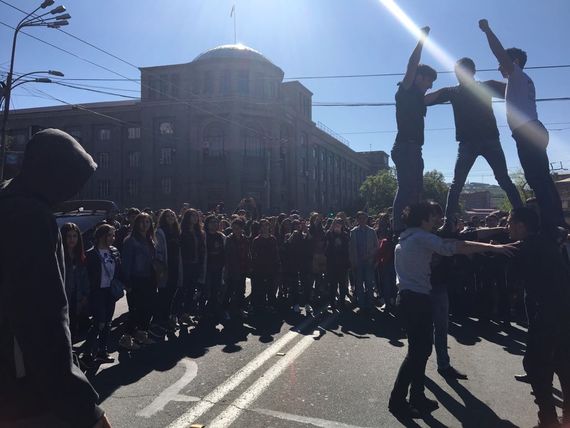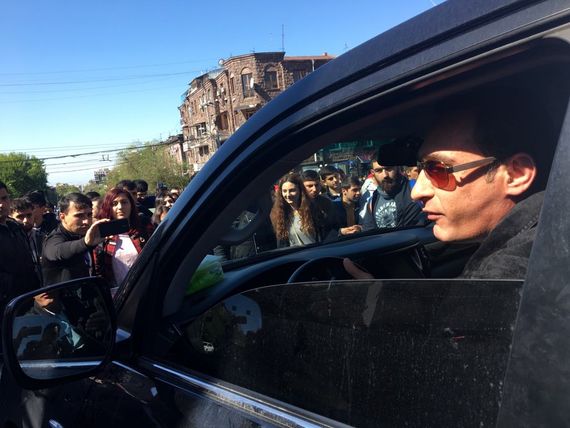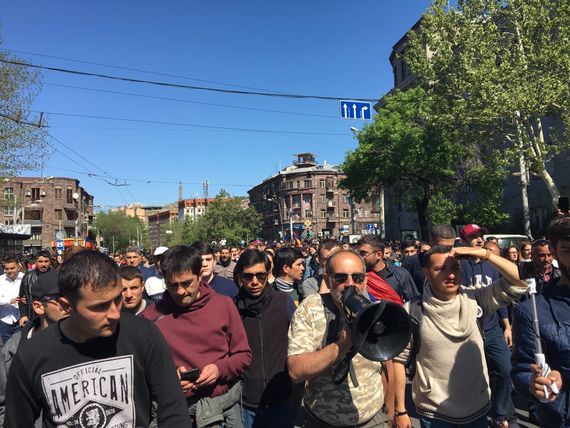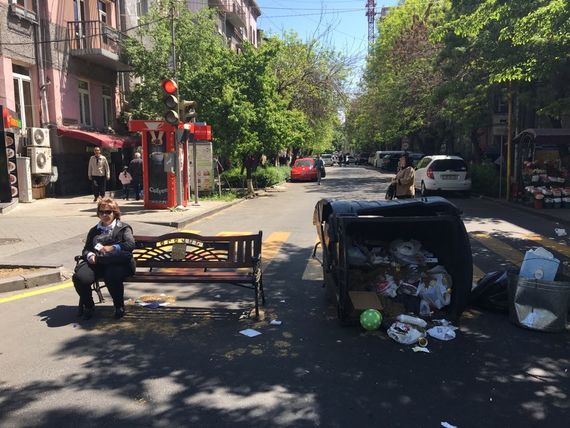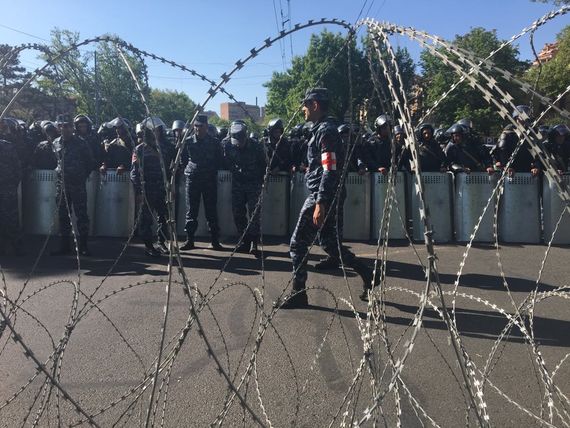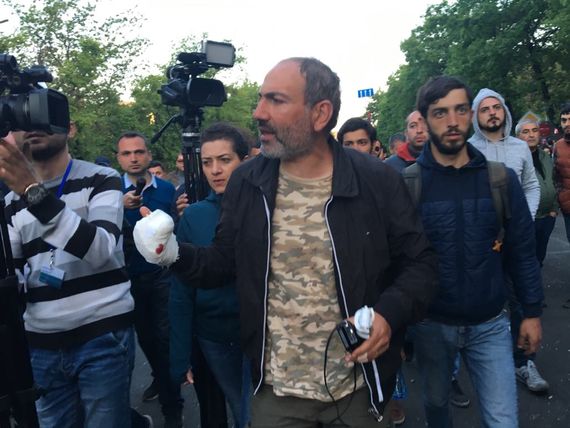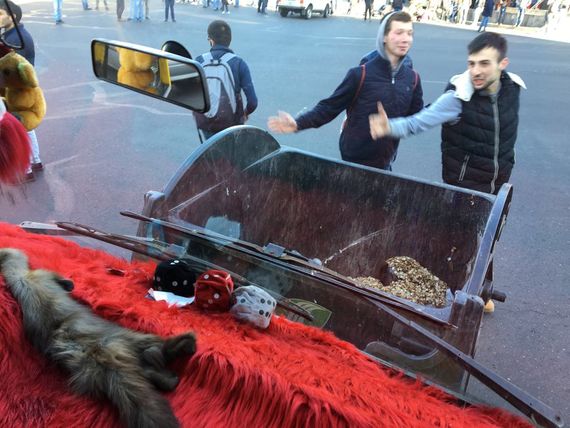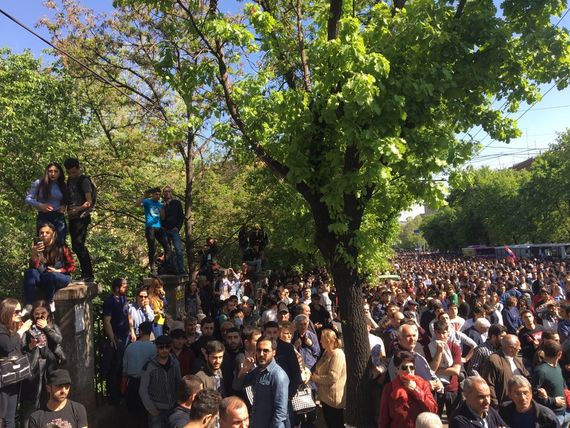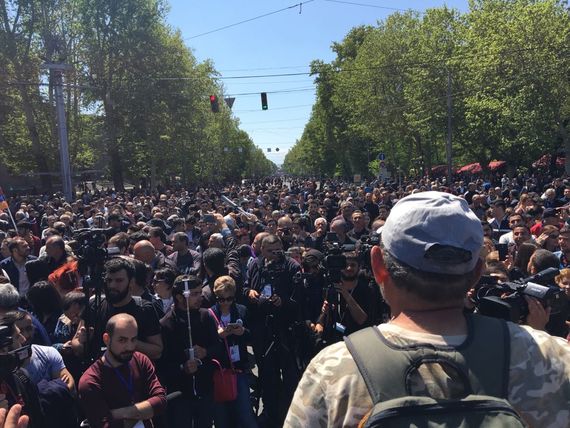Armenia is in the grip of another political crisis, the roots of which, this time around, can be traced back to the 2015 referendum on a package of Constitutional reforms. These reforms, which envisioned switching the system of governance from a semi-presidential to a parliamentary one, has allowed former President Serzh Sargsyan to maintain his grip on power. After his second and final term as president ended on April 9, it was already clear that the RPA would place his candidacy for the office of the Prime Minister.
For the past four days, thousands of people have taken to the streets to protest this power grab. Opposition MP Nikol Pashinyan, the leader of Civil Contract and the Yelq Bloc in parliament has been able to rally numbers not seen since the highly contested 2013 presidential election when presidential candidate Raffi Hovhannisian brought tens of thousands out into the streets claiming that the election had been stolen by Serzh Sargsyan and his loyalists.
Starting on Friday night, France Square which connects four major streets in the downtown core was taken over by protesters who greeted Pashinyan as he returned to the capital after a 14-day trek through the country. They kept the square and the adjoining streets shut down over the weekend.
On April 16, thousands more took to the streets starting around 8:15 a.m. in several acts of civil disobedience which also brought out hundreds of students from a number of universities. The night before, Pashinyan had explained the road map – block all major bridges, streets and the city’s metro system. People listened.
Several major intersections and streets began to be blocked off. Nikol Pashinyan and a number of others began by halting traffic at the beginning of Baghramyan Avenue, often getting into altercations with drivers. Security forces had already blocked the street further up near the parliament building.
University students joined by blocking several streets and intersections also getting into altercations with drivers. Pashinyan’s group joined the students in front of the Yerevan Medical University briefly. Another group of student protesters stormed the Yerevan State Architecture University, calling on other students to join them.
Baghramyan metro station was closed down from early morning and by the end of the day, the whole system shut down. Meanwhile, Pashinyan was moving throughout the city joining protesters and students as they continued to block several major streets calling on students and others to join them.
Meanwhile, near the intersection of Teryan and Koryun, a number of men in a black Mercedes jeep got out and began beating student protesters, some of whom were injured, with little police interference.
The entire downtown core was shut down and traffic paralyzed. Pashinyan then called on all the protesters to join him in France Square, where after a brief speech he told people that it was now time for him to go to work, meaning parliament. He asked people to walk with their hands open to show that they are peaceful and that police are “our brothers.” The thousands who had assembled in the square followed him to the police barricades.
After attempting to cross police barricades, clashes between protesters and security forces took place. Police used batons and stun grenades which resulted in multiple injuries. According to the Ministry of Health, approximately 46 people were injured in the melee including a number of police officers.
Nikol Pashinyan was also injured, taken to hospital where he was treated and released. He later returned to the square to join protesters. When he returned, members of the Yelq Bloc who had not joined Pashinyan’s attempt at stopping Serzh Sargsyan from becoming prime minister, were there to greet him including Edmon Marukyan, Armen Sargsyan and Mane Tandilyan. They did not formally announce that they were joining Pashinyan.
Later in the evening, several thousand assembled again at France Square and were told to prepare for tomorrow where attempts will be made to block all streets leading to parliament. Their objective? To try and prevent members of parliament from voting.
It is expected that members of parliament will elect the country’s new prime minister, tomorrow April 17 at noon. The ruling Republican Party and junior coalition partner, the Armenian Revolutionary Federation have the necessary votes to secure his election.
